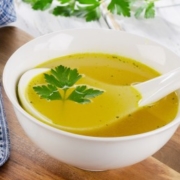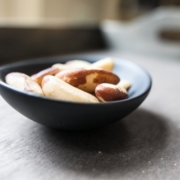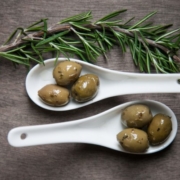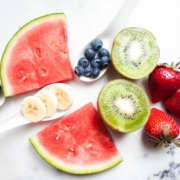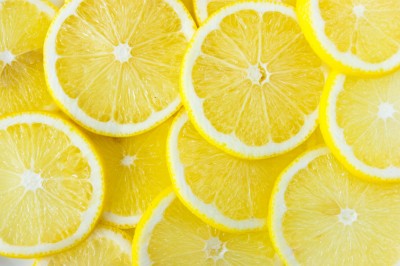
We do our best to eat healthy and exercise regularly, but have you thought about the beauty care products you use every day – or what might be in them? Would you be surprised to learn that there is an utter lack of policy in this country about what chemicals can be put in our personal care products?
The personal care industry is effectively unregulated. The last piece of regulation was passed in 1938 – and was all of one page long. This means companies are free to do whatever they want! Everyday products such as mascara, face wash, shampoo, conditioner, creams, etc. are filled with toxic ingredients. Many ingredients in these products are known carcinogens and endocrine disruptors.
Companies can use adjectives freely to entice buyers to purchase their seemingly “greener” products: natural, green, or eco (and so on).
The Environmental Working Group shows that the average woman uses 12 products containing 168 chemicals daily, while men use 6 products that contain 85 such ingredients. All together, 12.2 million adults are exposed daily to ingredients that are considered “known carcinogens.”
You may be thinking: “I want to have luxurious products that smell good and are super effective.” Well, you can still get these effects without the toxic chemicals. It is always about having the correct information to make the proper choices about what you choose to put on your body.
Here is a top ten list of chemicals to avoid:
- Phthalates: (DBP, DEHP, DEP and fragrance):
What is it: Phthalates are mostly added to products as solvents for dyes and as a plasticizer that prevents nail polish from becoming brittle. They also make fragrances stick to the skin.
Why Avoid Them: They are known to disrupt the endocrine system and may cause birth defects. DBP and DEHP are banned in cosmetics in the EU. Look for labels that say “phthalates free” as well as “fragrance free”.
Found In: synthetic fragrance, nail polish, hair spray and plastic materials.
- Sulphates: (Sodium Lauryl Sulfate SLS and Sodium Laureth Sulfate SLES):
What is It: Basically it is a foaming agent and detergent.
Why Avoid It: They can cause skin irritations and trigger allergies. SLES can be contaminated with ethylene oxide and 1,4-dioxine, a byproduct of the petroleum process. Both these can cause cancer and interfere with human development.
Found In: Shampoo, body wash, and bubble bath.
- Parabens: (methyl-, isobutyl-, propyl-, and others):
What It Is: These are preservatives that are added to prevent bacterial growth and mold.
Why Avoid It: They are endocrine (think hormones) disruptors that alter the way these hormones are meant to work in the body, they can cause cancer and developmental toxicity. Look for products that are labeled “paraben free”
Found In: shampoo, face cleanser, body wash, body lotion, foundation.
- Formaldehyde:
What It Is: These are preservatives commonly found in cosmetics.
Why Avoid It: It is a known carcinogen that is linked to asthma and neurotoxicity and respiratory irritation. Look for DMDM hyantoin, diazolidinyl urea, imidazolidinyl urea, methanamine, quaternium-15 and sodium hydroxymethylglicinate.
Found In: shampoo, body wash, bubble bath, baby bath soap, eyelash adhesive and hair dyes.
- Col- Tar Dyes:
What It Is: Polycyclic aromatic hydrocarbons (PAHs) are a group of chemicals that occur naturally in coal, crude oil and gasoline. It is used as a colorant and anti-dandruff agent.
Why Avoid It: They are known to be carcinogenic as tested by the U.S. National Cancer Institute and National Toxicology Program. According to the FDA, any product containing coat tar at 0.5% to 5% (the level deemed safe) must specify on their label the concentration of coal tar.
Found In: Hair dyes and shampoo
- Ethanolamines (MEA/DEA/TEA):
What It Is: They are used in cosmetics to make them creamy or sudsy.
Why Avoid Them: They are linked to allergies, skin toxicity, hormone disruption and inhibit fetal brain development.
Found In: hair dyes, mascara, foundation, fragrances, sunscreens, dry cleaning solvents and paint.
- Fragrance/Parfum:
What It Is: They are used in almost every self-care product. There are over 3000 chemicals used in the manufacturing of synthetic fragrances that have never been tested for toxicity. Fragrance formulas are protected under federal law’s classification of trade secrets and therefore does not need to be disclosed.
Why Avoid Them: They are hormone disruptors and allergens. In addition to the chemicals that go into making the fragrances they can also contain solvents, stabilizers, UV-absorbers, preservatives and dyes.
Found In: Every personal care product.
- Petrolatum:
What It Is: Mineral oil jelly is used as a barrier to lock moisture into the skin. Basically, it prevents the skin from breathing and excreting.
Why Avoid Them: Petrochemicals can be contaminated with polycyclic aromatic hydrocarbons (PAH’s). The European Union considers petrolatum a carcinogen and restricts its use in cosmetics.
Found In: Hair care products for shine, body wash, children’s bath products and baby lotion.
- BHA and BHT:
What It Is: They are synthetic antioxidants that extend the shelf life of a product. They are preservatives in food, cosmetics, food packaging and animal feed.
Why Avoid Them: They are most likely carcinogens and hormone disruptors. There are studies indicating developmental and reproductive toxicity.
Found in: Lipsticks, moisturizers, diaper creams
- Oxybenzone:
What It Is: A sunscreen agent and ultraviolet light absorber.
Why Avoid It: It is linked to irritation, allergies and possible hormone disruption as well as developmental and reproductive toxicity. It is not restricted in the US but restricted in cosmetics at up to 10%maximum concentration in the EU, according to The Safe Cosemtics.
Found In: sunscreen, nail polish, lip balm, fragrance, shampoo, conditioner, hair spray moisturizers and foundation.
This may seem overwhelming but I challenge you to try and take one ingredient from the list out of your daily regime at first. Let me know how it goes!
If you want to read more on the industry I recommend reading:
Not Just a Pretty Face- The Ugly Side of The Beauty Industry by Stacy Malkan
And checking these sites:
Sending you love and light!

